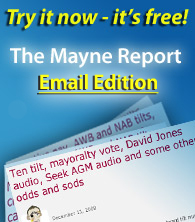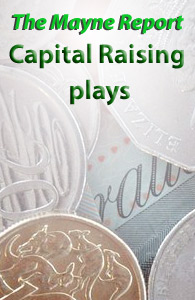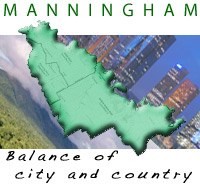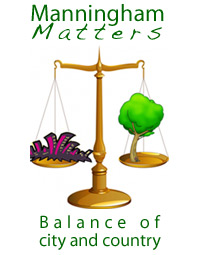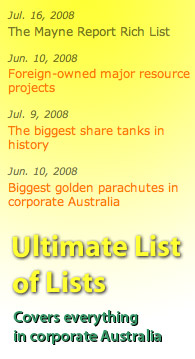Howard's 2005 attempt to stop EGMs being called
January 14, 2008
Calling a special general meeting of shareholders may be about to get a lot harder, reported Peter Weekes in The SMH on March 9, 2005.
The rate of share ownership, directly or indirectly, in Australia is greater than in any other country. It makes sense, then, that we want to scrutinise the directors we employ to run our companies, particularly if something is going wrong.
Unlike most other countries, it's easy here for 100 shareholders to club together to call a special general meeting of a company to voice their disapproval between regular general meetings.
But is this ease in calling meetings being abused by special interest groups to the detriment of other shareholders who ultimately foot the bill? The newly formed consensus is yes.
"It is ludicrous that someone can split 100 shares, giving [people] one share each, then call a meeting between annual meetings. We think that is wrong," says John Curry, the chairman of the Australian Shareholders Association (ASA), whose organisation until last week had been vocally opposed to scrapping the rule.
After five years of sometimes heated debate and two previous attempts, it appears the Government and business groups - and now the ASA - will finally get their way, replacing the 100 rule with the requirement that at least 5 per cent of total voting shares must call a special meeting.
"At first we were opposed," Curry says, "but we are now supporting change. We think that if an issue is important enough for us to get concerned about, we can get institutional investors to support us, giving us the 5 per cent."
The ASA's about-face took many by surprise, including the Federal Opposition, which has already forced a parliamentary inquiry into the Government's draft amendment bill to the Corporations Act. It is also examining the plan to lower the number of shareholders needed to put a resolution on the agenda of a regular meeting to 20 from 100.
Still, what do these changes mean for shareholder activism? Are small investors about to be put back in the box to become the proverbial mushroom? Does the alignment of institutional investors and the country's largest retail shareholder group sound the death knell for greater transparency?
In the past few years the 100 shareholder rule has been used by anti-uranium groups against miner North Ltd, anti-logging groups against Australia's largest forestry company Gunns and against Wesfarmers and by groups within the NRMA vying for control of the motoring organisation. The latter earned the wrath of the judiciary, who were asked to rule on actions brought by the bickering groups.
Ian Ramsey, a corporate governance expert from the University of Melbourne, says the NRMA case highlighted the need for change - that Australian law was "out of kilter with corporate law regimes in other countries". European countries start at 5 per cent and go much higher.
"At the NRMA, they were requesting meetings when the AGM was only a couple of months away," he says.
Curry says the ASA has never used the 100 rule nor, to his knowledge, have any other shareholders concerned about a company. None of the resolutions put to shareholders by special interest groups has won the support of more than a handful of investors, but they have cost the companies millions of dollars he says.
A report by legal firm Minter Ellison found it cost a company the size of the NRMA $4.5 million to arrange each special meeting.
One of Australia's best-known consumer activists, Crikey.com founder Stephen Mayne, has been calling for changes to the 100 rule for three years.
Mayne says even if he had the time and resources to gather 100 signatures, there are easier and more effective ways of questioning a company, such as running for the board in which case you need only your own signature.
"Five per cent is perfectly reasonable for calling an EGM [emergency general meeting] because calling an EGM is quite a dramatic step to take. It shouldn't be taken lightly given the large costs of running it," he says.
"You just can't have 100 shareholders forcing a company like Telstra to have a special meeting that has absolutely no chance of achieving anything other than costing shareholders $2 million or $3 million."
Steven Munchenberg, the Business Council of Australia's general manager of government and regulatory affairs, says although only a few special interest groups have so far called EGMs, "it was successfully being used as a gun to the head of the company". The bullet is the company's profit and consequently the share price and dividend stream.
He says if investors wanting a meeting can't get 5 per cent support to call one, how are they going to get the necessary support for the resolution at the meeting?
Munchenberg differs with the proposal to reduce the number of shareholders required to put an item on the agenda of an annual meeting to 20.
He says this would allow fringe groups to hijack meetings and prevent shareholders - mainly self-funded retired investors - from asking their own questions of directors. Richard Gilbert, the chief executive of Investment and Financial Services of Australia, whose members collectively have $655 billion under management, says IFSA is still considering the policy but says it may lead to long meetings testing the patience of even the most dedicated investor.
Curry says the ASA's position is Machiavellian. He says if the 20 rule passes, companies will complain if meetings are used by fringe groups and fears it will be replaced with a far harsher 5 per cent rule. Its compromise suggests a formula of 100 shareholders each holding a marketable parcel of shares.
Mayne would like the government to adopt a similar model to the United States, where you need $US2000 ($2255) worth of shares to get an item up.
Copyright © 2024 The Mayne Report. All rights reserved









